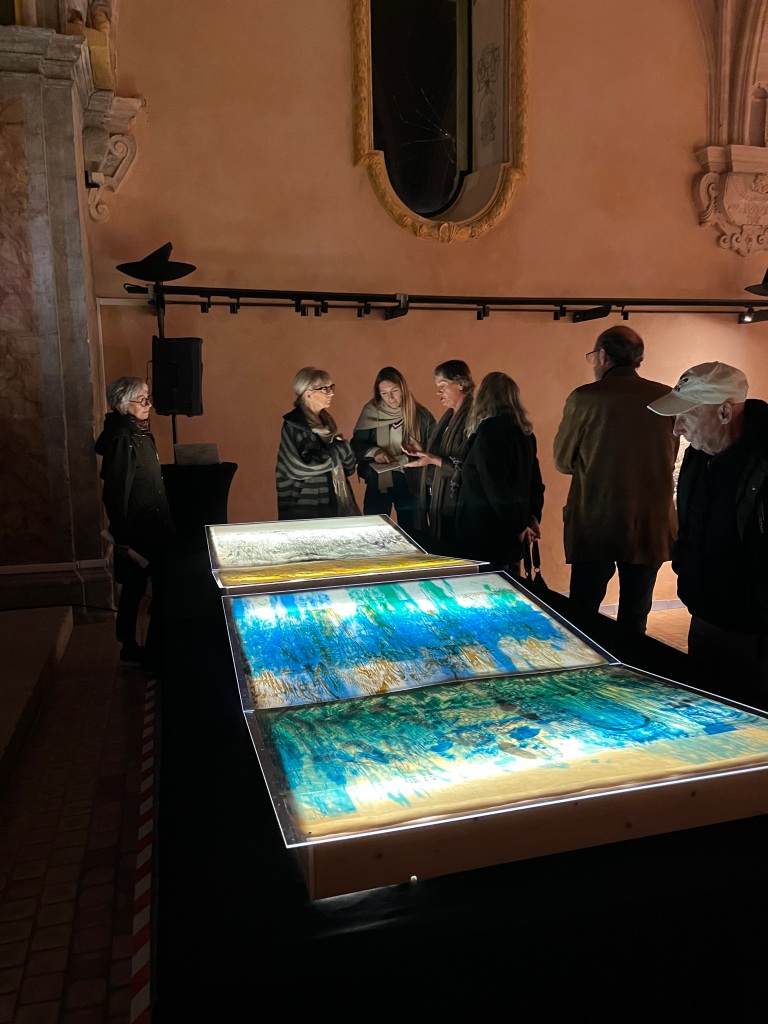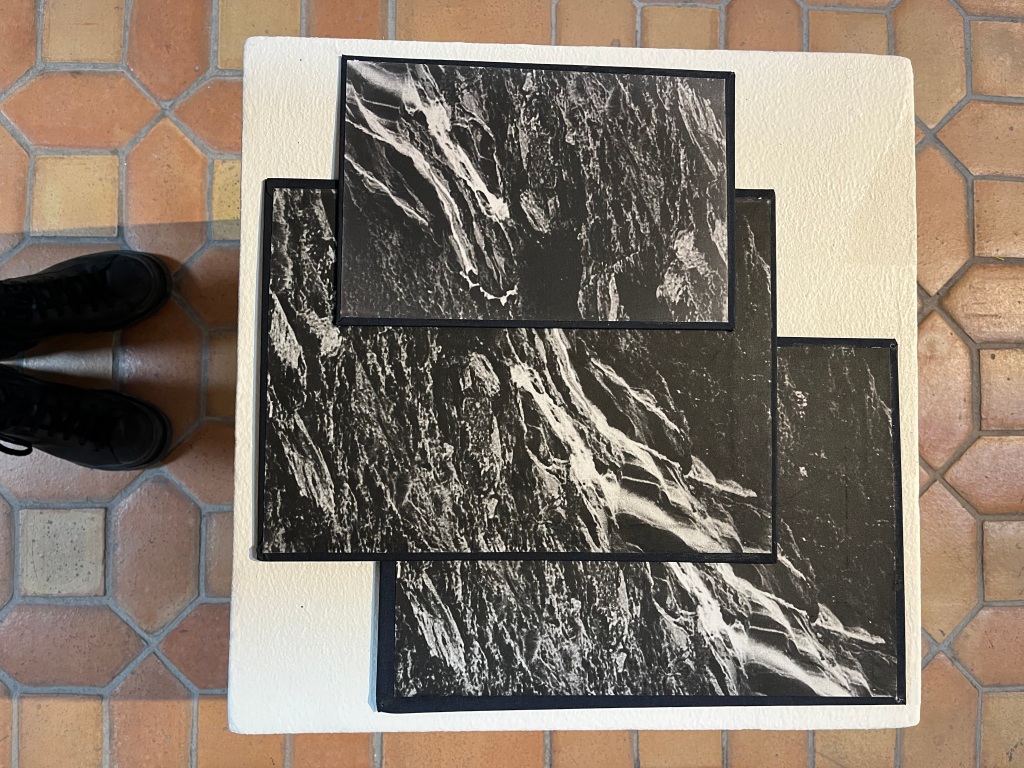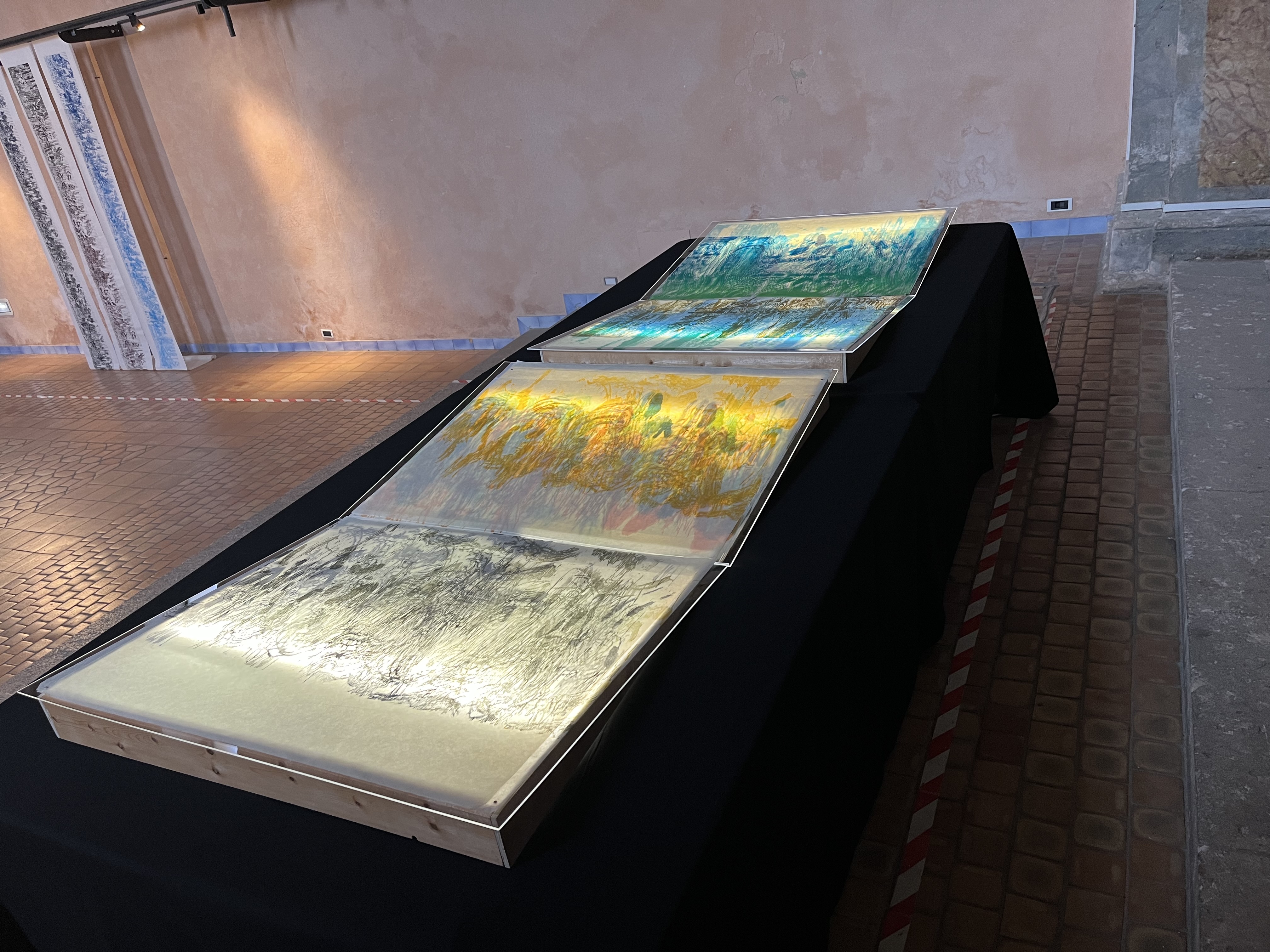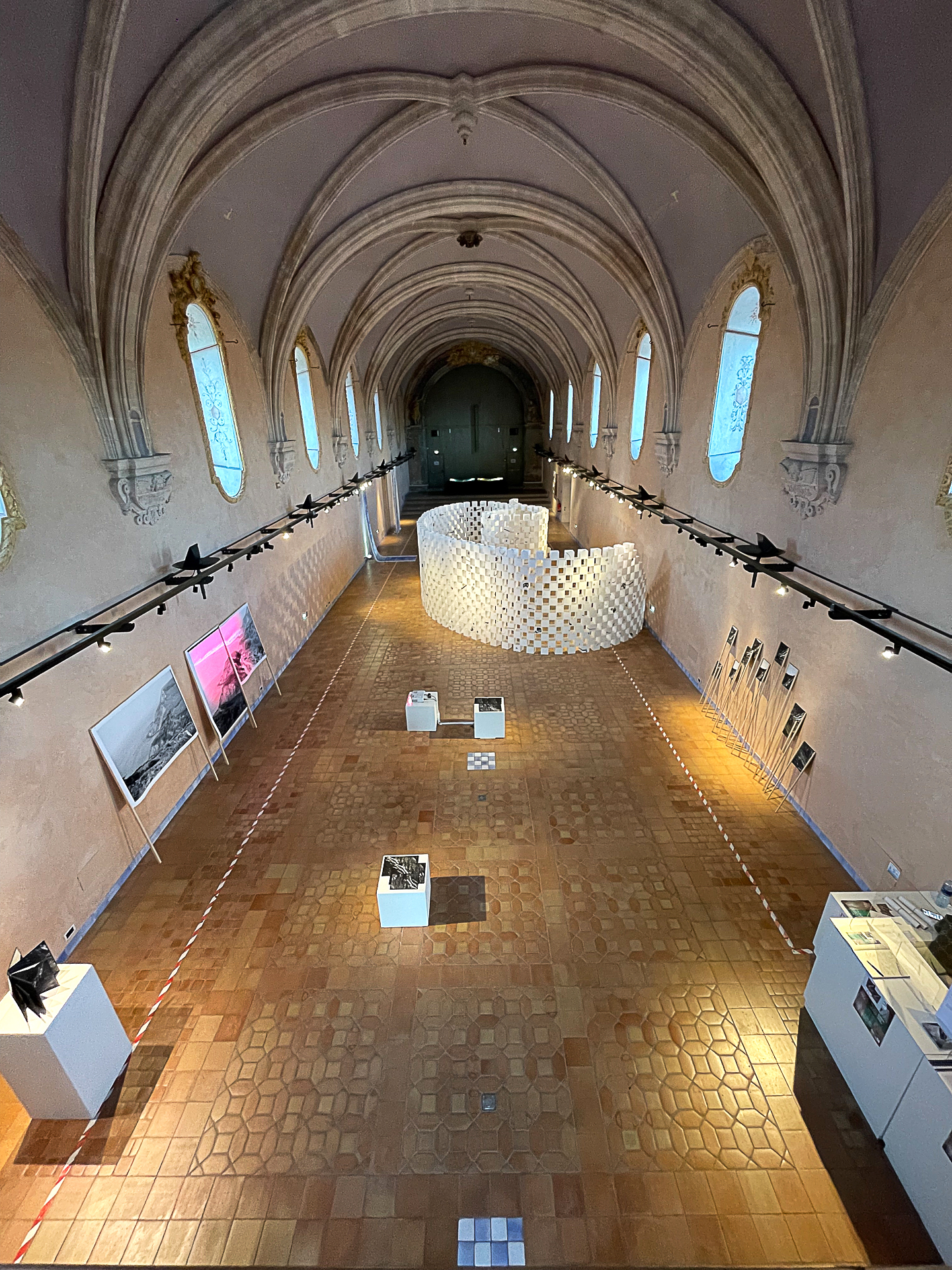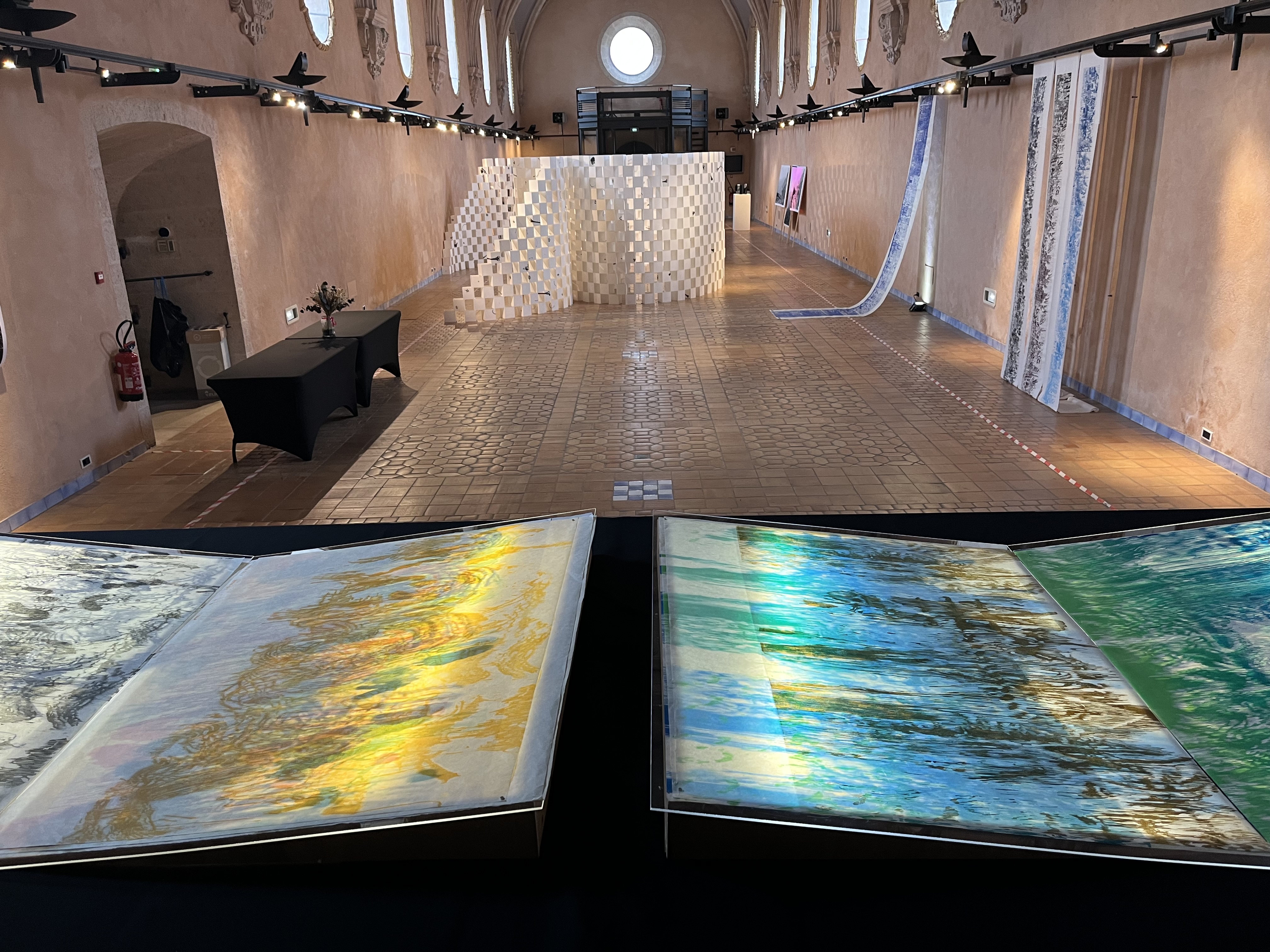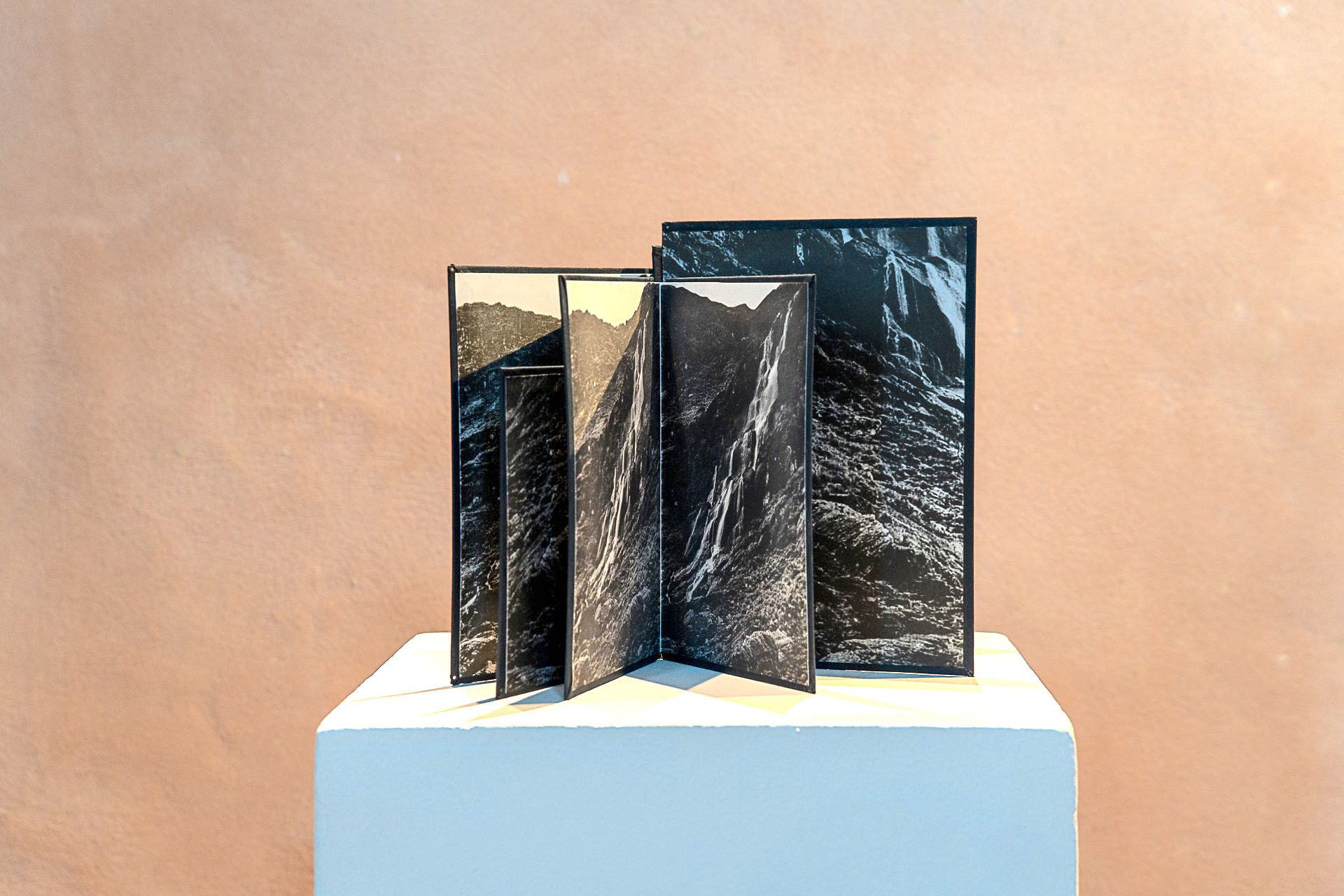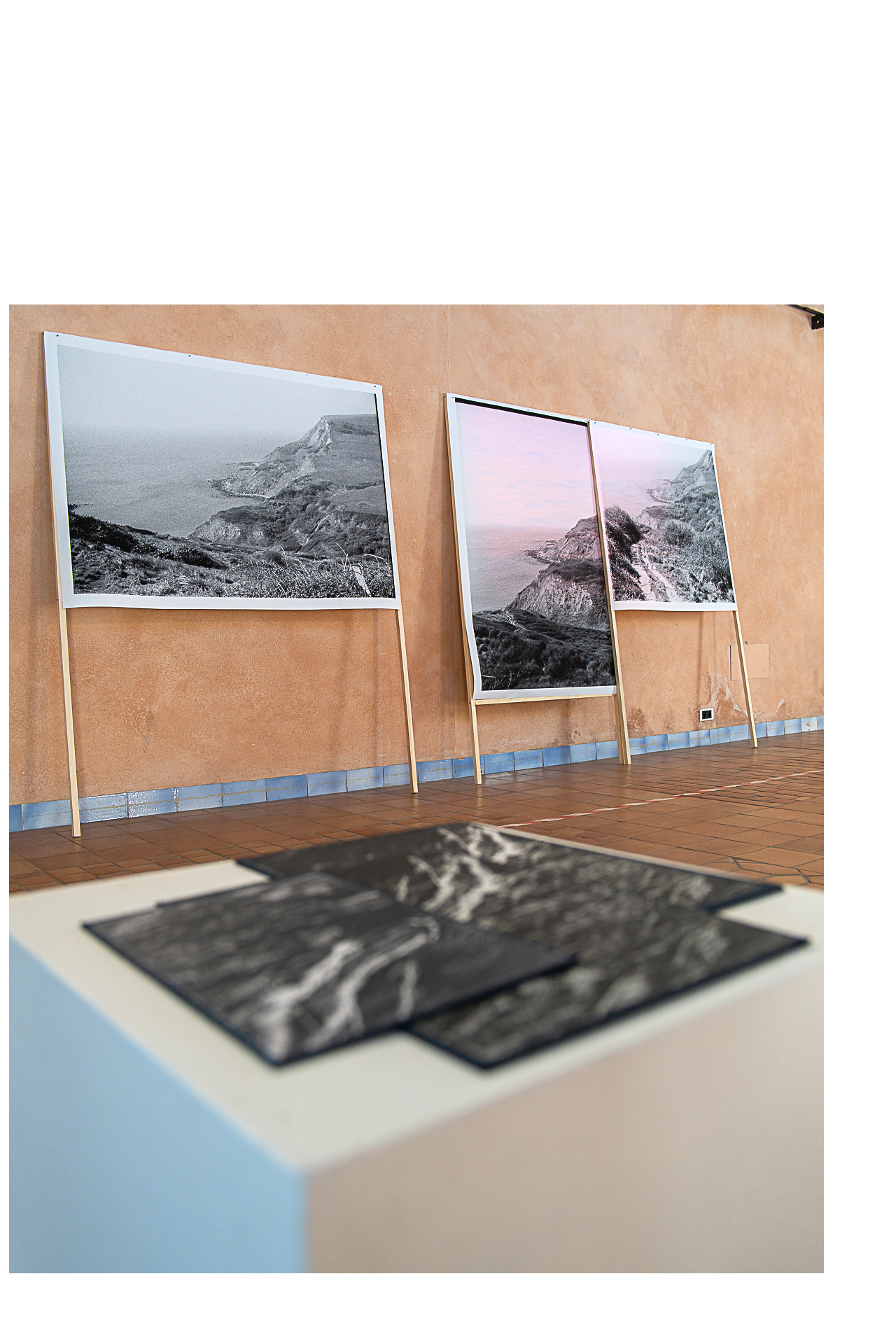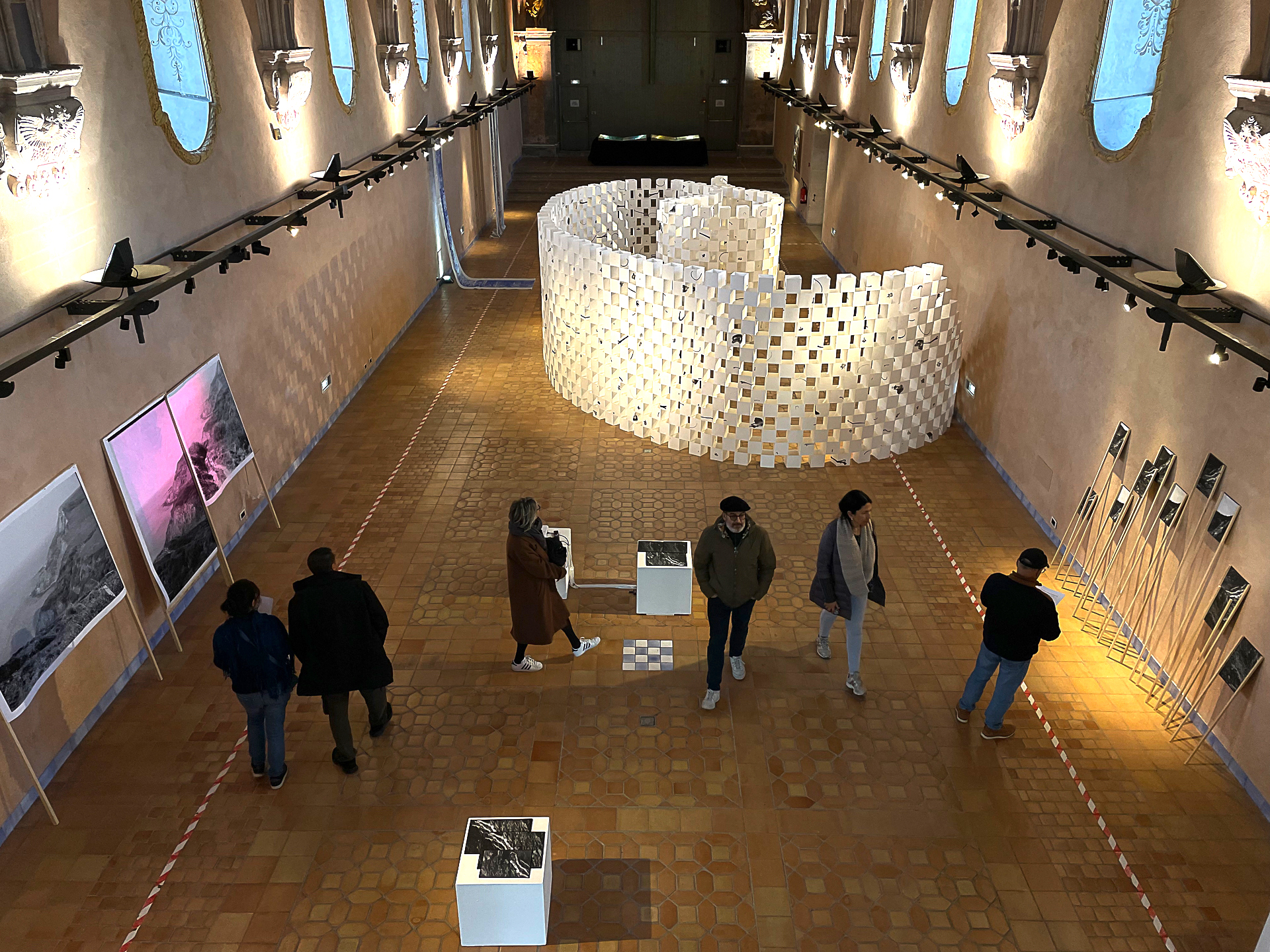La Chapelle des Penitents Blues, La Ciotat, France 09/11/23- 02/12/23
Victoria Ahrens- Carol Wyss- Victoria Arney
…………………………………………………………………………………………………………………………………………………………..
In this series The Light Between Us (Vestiges of the Unearthed) Victoria is exploring notions of memory and our encounters with the landscapes of the Anthropocene in her photographic images of Deep Time geology. The analogue photographs and projections refer to the Jurassic coast and her childhood memories of the place, while toxic colours pervade the surface reminding the viewer of the contemporary relationship of these landscapes to manmade pollution and climate change. The photogravures work with the Coomeenatrush waterfall, where some of the earliest human boat constructions were found buried at its source, and where the waters wash away the memories of migration and immigrations from Ireland to the wider world during the Famine years. Victoria’s ancestors went to Argentina from Ireland, travelling by boat to these foreign lands, where she grew up. The geological formations of both the Altiplano in Argentina and the Jurassic coasts are being eroded by mining and landslides due to human activity, not least to find the precious rocks and minerals that are used to power batteries, that make digital photography and darkroom chemistry possible.
__________________
Dans cette série The Light Between Us (Vestiges of the Unearthed), Victoria explore les notions de mémoire et nos rencontres avec les paysages de l’Anthropocène dans ses images photographiques de la géologie des Temps Profonds. Les photographies et projections analogiques font référence à la côte jurassique et aux souvenirs d’enfance de ce lieu, tandis que des couleurs toxiques imprègnent la surface, rappelant au spectateur la relation contemporaine de ces paysages avec la pollution d’origine humaine et le changement climatique. Les photogravures fonctionnent avec la cascade de Coomeenatrush, où certaines des premières constructions de bateaux humains ont été retrouvées enterrées à sa source, et où les eaux effacent les souvenirs de migration et d’immigration de l’Irlande vers le reste du monde pendant les années de famine. Les ancêtres de Victoria sont partis d’Irlande pour l’Argentine, voyageant en bateau vers ces terres étrangères où elle a grandi. Les formations géologiques de l’Altiplano en Argentine et des côtes du Jurassique sont érodées par l’exploitation minière et les glissements de terrain dus à l’activité humaine, notamment pour trouver les roches et les minéraux précieux qui sont utilisés pour alimenter les batteries, qui rendent possibles la photographie numérique et la chimie en chambre noire.
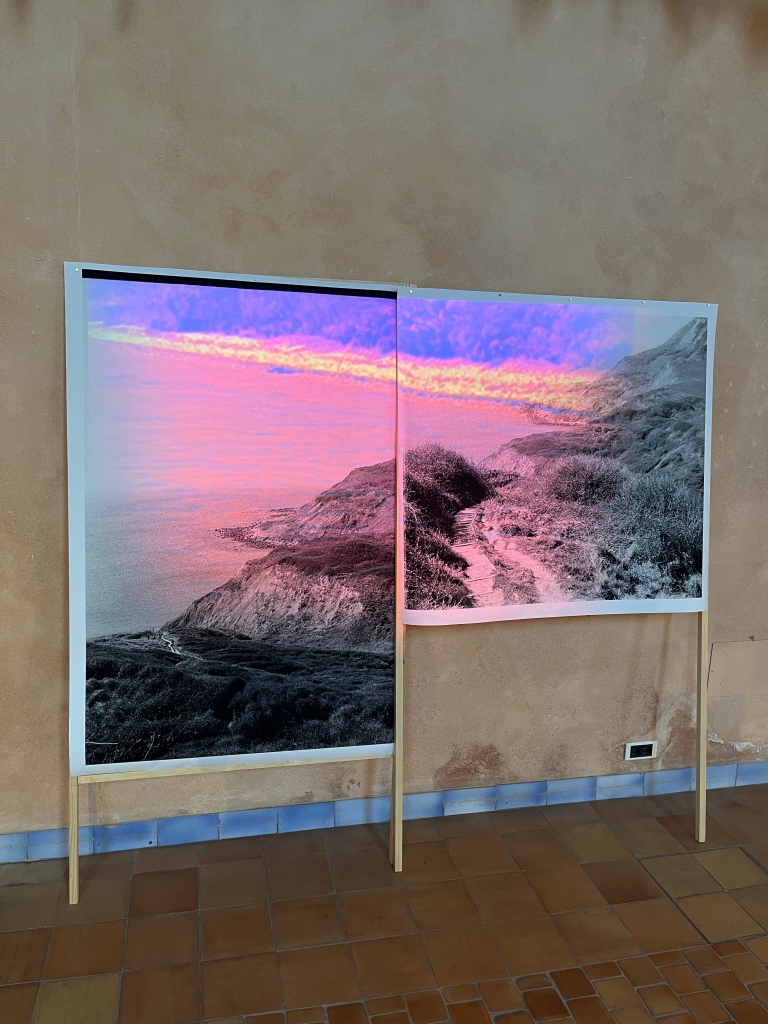
Victoria Ahrens, Vestiges of the Unearthed (2023) Analogue photographs, pigment prints, wooden structure, projected film (La Mer(ma)
SANS HORIZON, SANS RIVAGE, La Ciotat
This small coastal city in the south of Provence, near Marseille, is considered to be the birthplace of cinema. It is where the Lumiere brothers, pioneers of early cinema, are said to have shot some of the first films (at the station, the sprinkler sprinkled etc)” in 1896, and where they first projected their collection of short films to a large paying audience at the Eden theatre- the oldest continuously working cinema in the world.
We were invited to create an exhibition of large scale works for the Chapelle des Penitents Blues, a huge empty chapel with a long history at La Ciotat.
Here I installed three large scale analogue images, pigment prints 1.6 m x 1.1 m each, on a wooden structure, with a projected film of the sea, hand coloured pigment prints and a series of black and white photo etchings- the film projected onto the large scale film photographs used hand tinted filters in pink, orange and red hues- taken from the rock minerals in situ, where these images were exposed snd developed. This film is an homage to one of the 40 films the Lumiere brothers created: a 54 second moving image piece of the sea called simply La Mer (1895). The images of ragged coastlines, recall the eroding cliffs of both south west Britain and Brittany- with the changing hues of the sea creating a toxic yet soothing palette. This serves as a reminder of our rose tinted relationship to places of the past, of the nostalgia of summer holidays by the sea. Yet, they are tarnished with unnatural colours, the colours of toxic residue spilt or left on coastlines as chemicals from historic mining or fertilisers seep into the fissures and troughs, creating toxic luminescence in the sea and on the film itself.

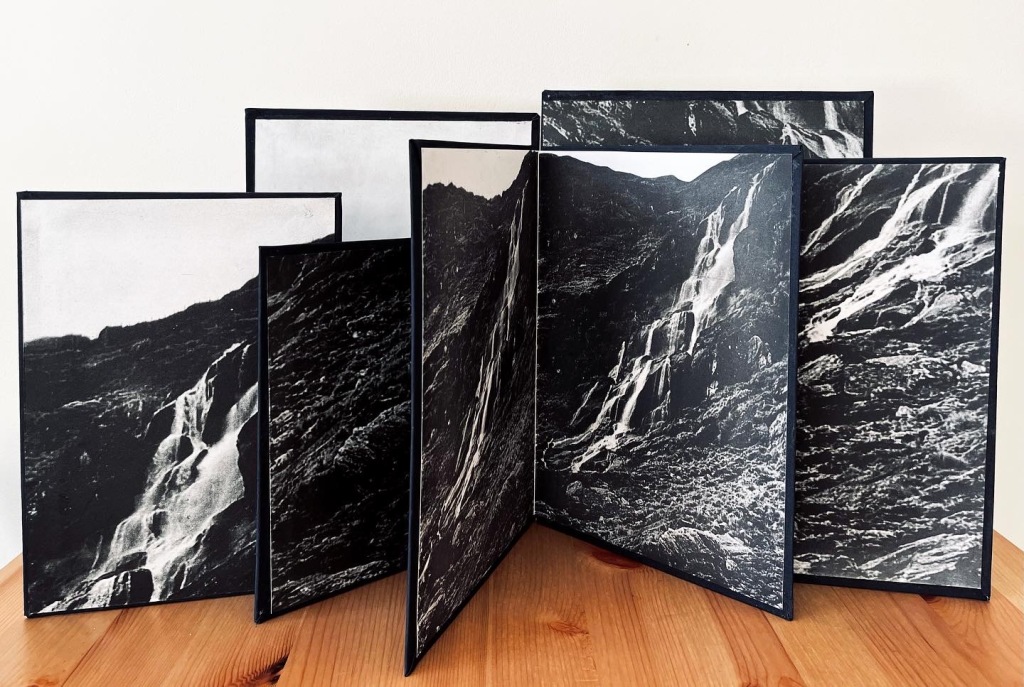
Protest of the waters (2023) shows 25 photo etchings of the Coomeenatrush waterfalls. In West Cork- at the base of which, in a bog lake, the earliest boat like structure has been found – taken out at first to date it snd study it, it could not be preserved outside the bog itself, where it has now been laid to rest All of these pieces refer to the hidden, invisible and ephemeral encounters with landscapes of change- where the increasing activity of humans means the loss of bird habitat, song snd language and with it our ancestral histories. Without Horizon, without shore- the title is coined from a phrase by Monet as he painted his final water Lilly paintings- 100 years ago, upon his death, given to the French state on Armistice day.


Benedicte Lelay produced a 20 minute live performance piece in response to the large installations and film recreating monstrous bodyscapes to interact with the violence of climate change and our baggage and detritus as humans.
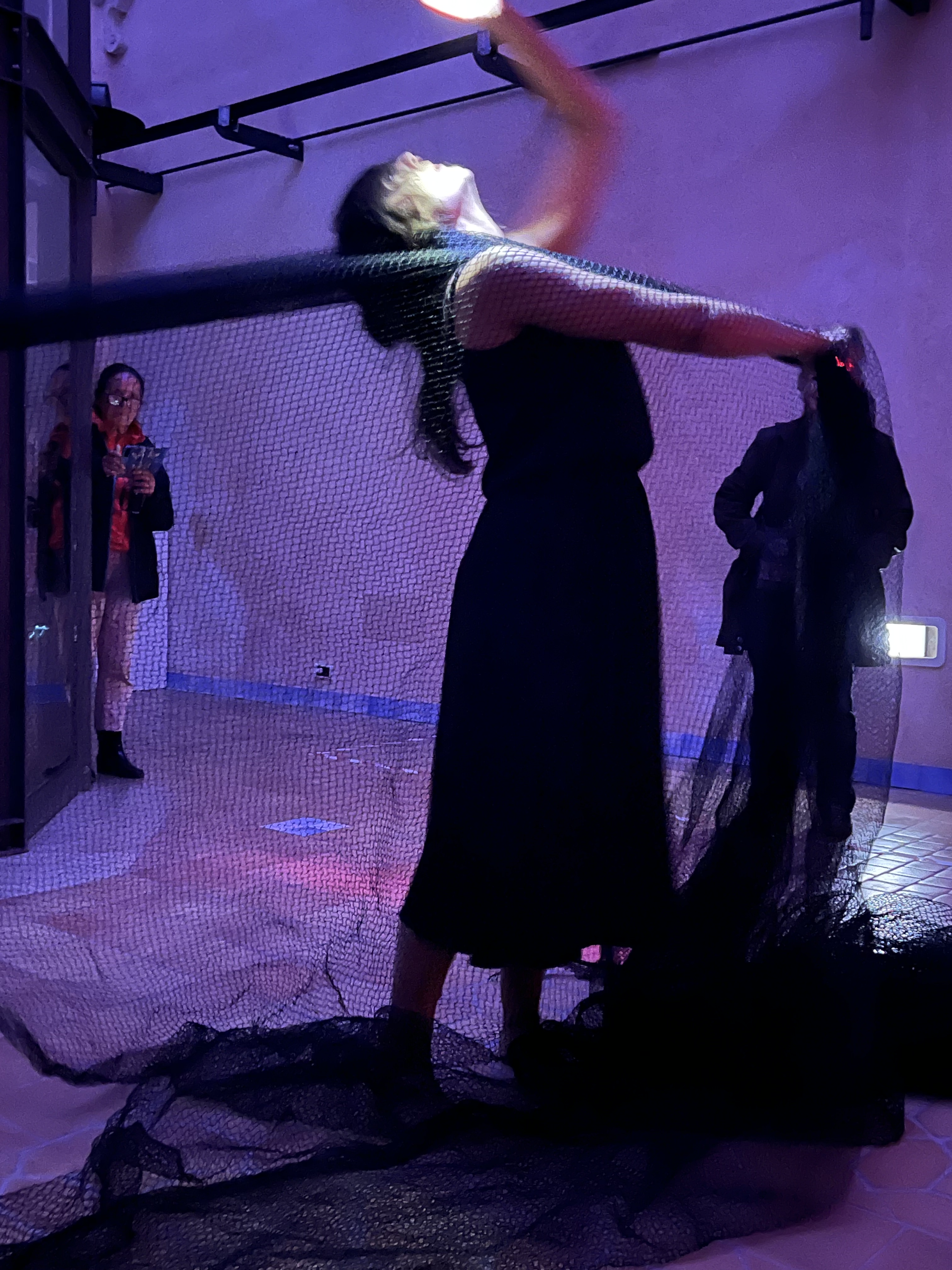
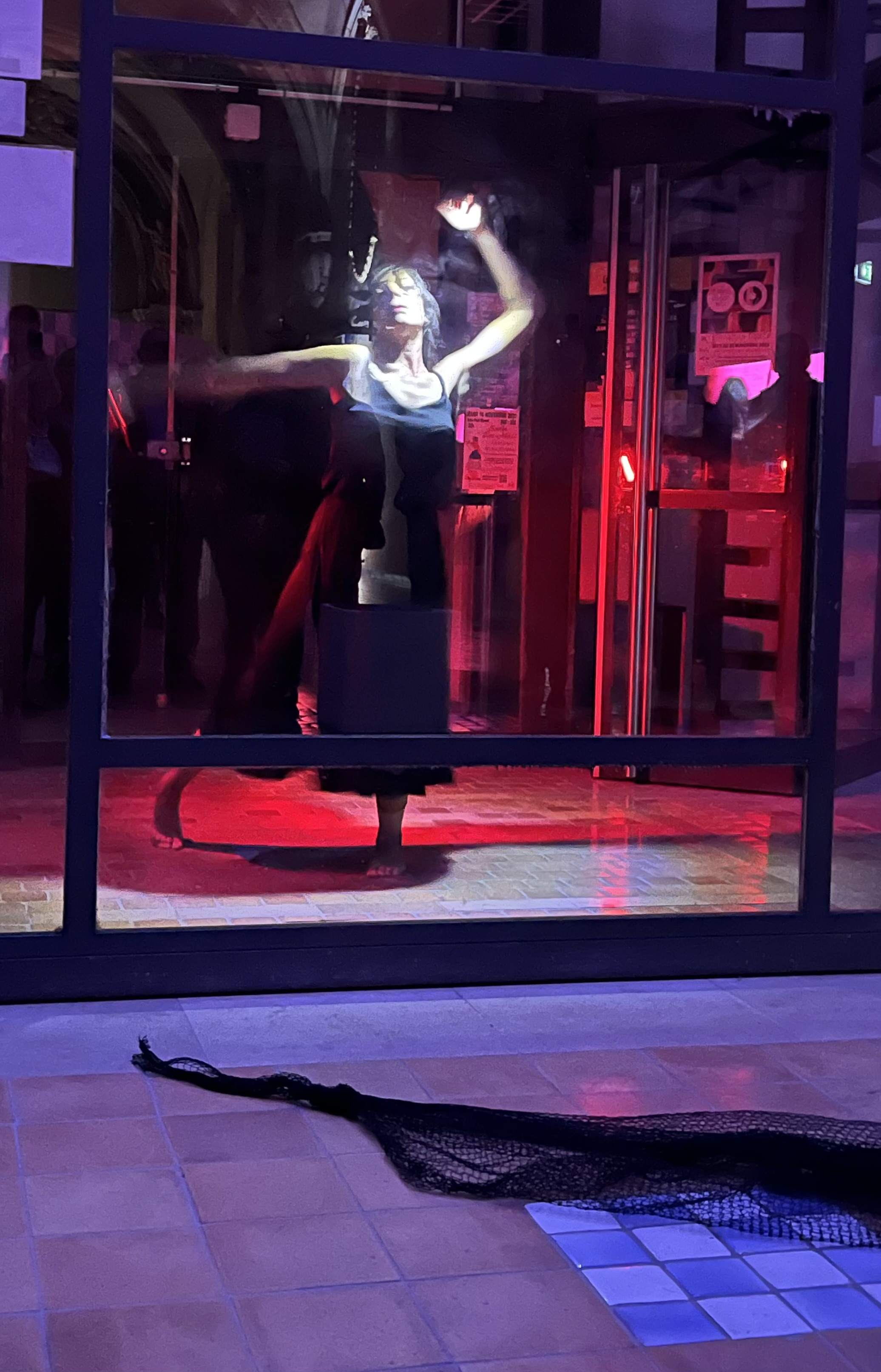


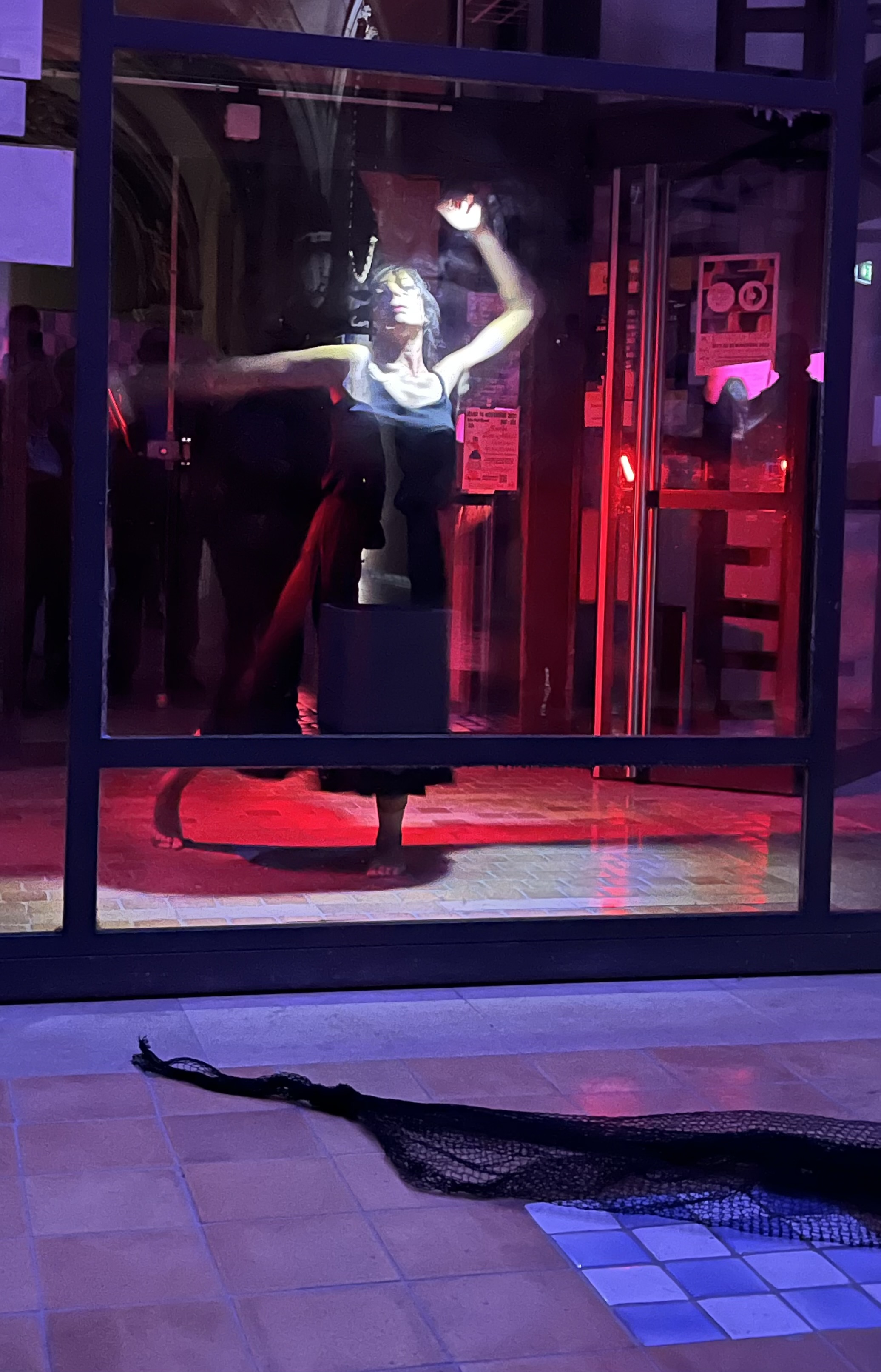

The Pencil of Nature (2023) Hand pigmented black and white photograph, wooden baton support, 210 cm (h) x 110 cm
…………………………………………………………………….
Carol Wyss architectural construction of paper cubes, each depicting a human bone protrudes into the gallery space- both a place to immerse yourself inside its walls or to look through it onto the landscapes in the rest of the chapel- perp holes between the bone mausoleum. Victoria Arney’s illuminated bird scripts printed on Japanese paper, recall the earliest known language and song before humans existed, and allude to the illuminated manuscripts of religious texts.
